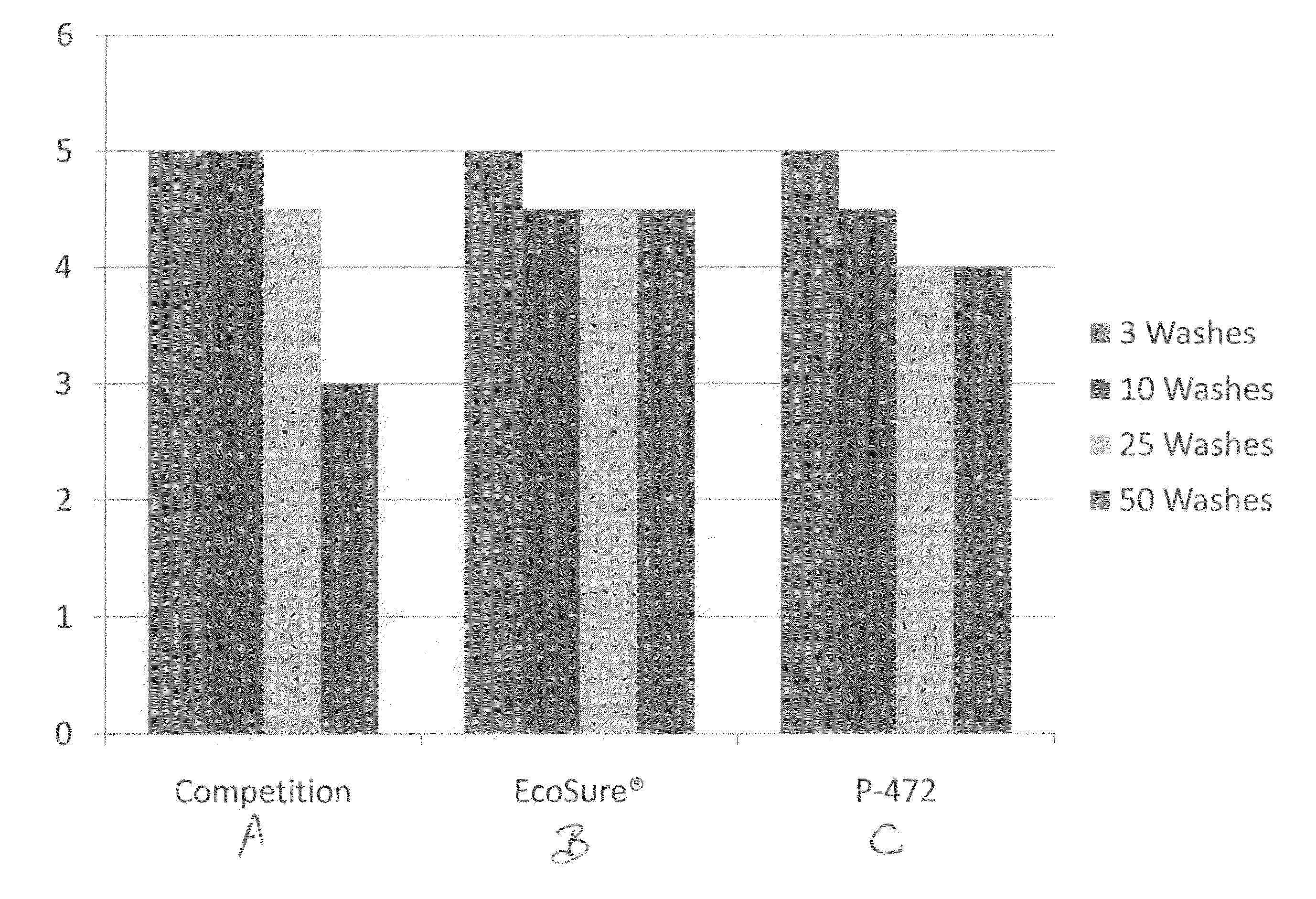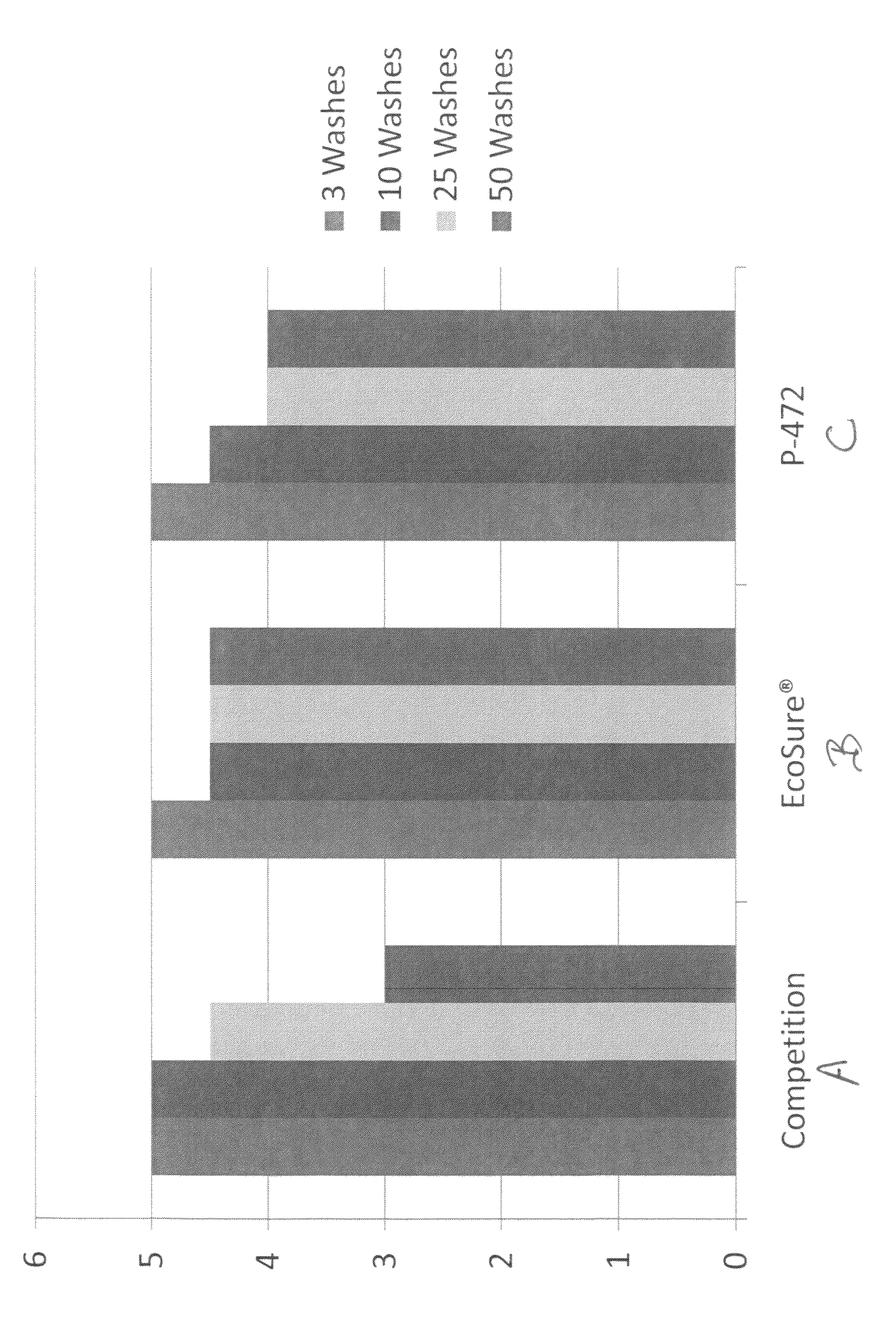IPA/polyester copolymer fiber
a polymer fiber and polymer technology, applied in the field of polymer fibers, can solve the problems of less than desirable dyeing consistency and resistance to pilling
- Summary
- Abstract
- Description
- Claims
- Application Information
AI Technical Summary
Benefits of technology
Problems solved by technology
Method used
Image
Examples
Embodiment Construction
[0021]Generally, polyester polymer is produced by the reaction of ethylene glycol and terephthalic acid or its derivatives. Fiber forms which can be produced from the polymer are filaments, staple, and tow. Polymerization is accomplished using an ester of dihydric alcohol and terephthalic acid. Traditionally, polyester filaments are produced by forcing the molten polymer at a temperature of about 290° C. through spinneret holes followed by air cooling, combining the single fiber into yarns, and drawing or stretching the yarns several times their original length to orient the long chain molecules and gives the fibers, and consequently the yarn, strength.
[0022]In one process in the prior art for continuous copolymerization wherein, for example, terephthalate acid and ethylene glycol are fed into a polymerizer of a type well-known in the art, and as polymer is produced, the solid product is moved to a chipper, then moved to a melting stage, next to an extruder and extruded through a sp...
PUM
| Property | Measurement | Unit |
|---|---|---|
| temperature | aaaaa | aaaaa |
| pilling resistance | aaaaa | aaaaa |
| weight | aaaaa | aaaaa |
Abstract
Description
Claims
Application Information
 Login to View More
Login to View More - R&D
- Intellectual Property
- Life Sciences
- Materials
- Tech Scout
- Unparalleled Data Quality
- Higher Quality Content
- 60% Fewer Hallucinations
Browse by: Latest US Patents, China's latest patents, Technical Efficacy Thesaurus, Application Domain, Technology Topic, Popular Technical Reports.
© 2025 PatSnap. All rights reserved.Legal|Privacy policy|Modern Slavery Act Transparency Statement|Sitemap|About US| Contact US: help@patsnap.com


